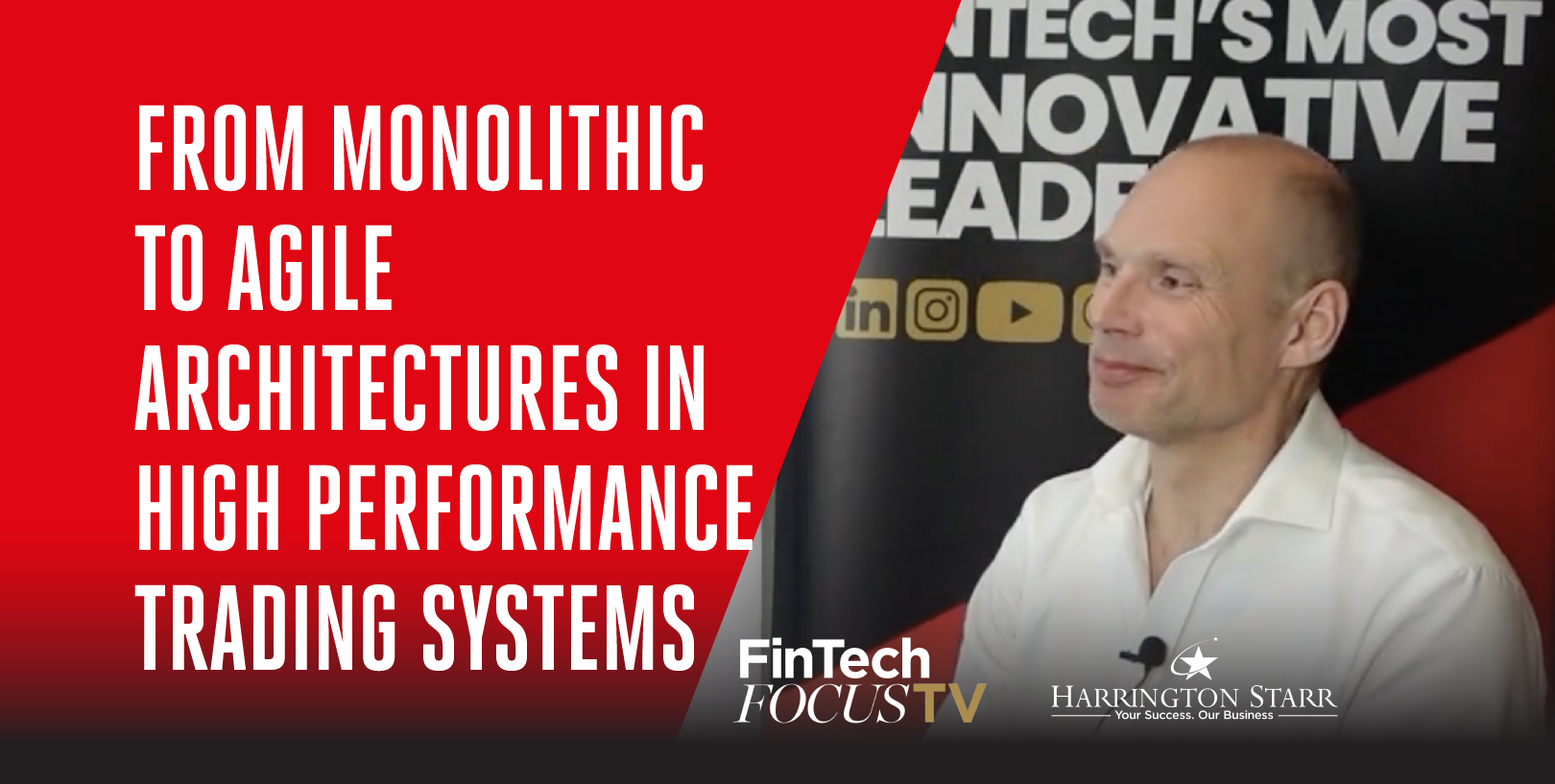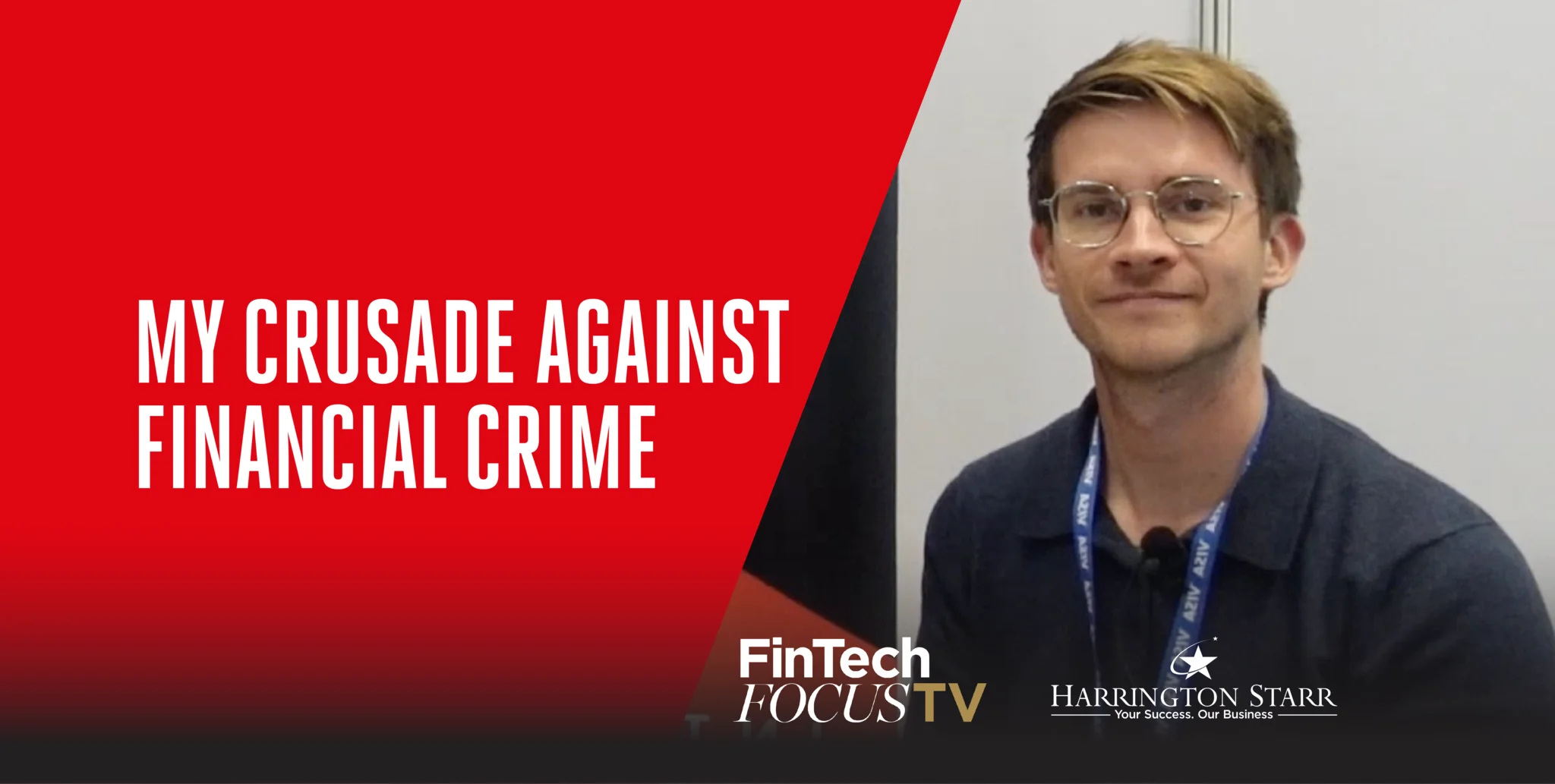
Is Trading Tech Evolving Fast Enough to Keep Up?
In a special episode of FinTech Focus TV, filmed live at TradingTech Summit 2025 in Canary Wharf, Toby sits down with Jon Butler, Co-Founder & CEO at Velox, to discuss the evolving landscape of trading technology. As firms navigate the challenges of legacy infrastructure, automation, and AI-driven efficiencies, this conversation sheds light on how financial institutions are adapting to the ever-changing demands of the capital markets.
The Evolution of Velox and the Buy-and-Build Model
Jon Butler reflects on Velox’s journey as it celebrates its seventh anniversary. Over the past seven years, Velox has grown significantly, now serving 30 firms across the capital markets industry. Velox operates on a buy-and-build model, allowing banks and broker-dealers to purchase essential infrastructure while retaining the flexibility to develop bespoke applications tailored to their specific needs.
The industry has long grappled with the choice between buying off-the-shelf solutions and building in-house technology from scratch. While traditional vendors provide speed to market, they often lack the adaptability needed for long-term innovation. On the other hand, building proprietary systems is costly, complex, and time-consuming. The buy-and-build approach strikes a balance, enabling firms to leverage existing technology while customising the elements that differentiate their business.
The Shift from Monolithic Systems to Agile Architectures
One of the key takeaways from the TradingTech Summit panel discussion was the shift from monolithic systems to agile architectures in high-performance trading. Historically, financial institutions faced a rigid choice: either buy fully integrated trading systems or build their own from the ground up. Today, firms are seeking a hybrid approach, leveraging modular, API-driven infrastructures to enhance operational efficiency and technology agility.
Jon Butler emphasises that the industry is witnessing a fundamental shift in how technology is consumed and deployed. Firms are no longer content with one-size-fits-all solutions. Instead, they are embracing personalisation and differentiation, ensuring that their trading systems align with their specific strategies and business goals.
Automation and the Role of AI in Trading Technology
With automation and AI dominating discussions in capital markets, Toby and Jon explore how these innovations are reshaping trading infrastructure. AI has the potential to revolutionise financial services, but its implementation must be strategic and context aware. The allure of microservices architectures, which have been widely adopted in cloud computing and SaaS environments, presents both opportunities and risks in trading technology.
Jon cautions against the premature adoption of microservices in trading environments without a clear understanding of their implications. While microservices enable scalability and flexibility, they also introduce complexity and potential failure points. Unlike consumer applications where a minor failure is acceptable, the stakes in trading are significantly higher. A single system failure can lead to substantial financial losses, making robust, well-tested architectures essential.
One of the key challenges in AI-driven automation is ensuring that workflow automation is executed correctly. Many firms underestimate the risks of manual processes, which can introduce operational inefficiencies if not managed properly. Velox’s approach is to provide a framework that enables clients to customise their automation strategies without sacrificing reliability.
The Efficiency Imperative: Reducing Costs Without Sacrificing Productivity
The financial markets are under increasing pressure to reduce operational costs while maintaining high performance. The inefficiencies of legacy systems continue to burden financial institutions, and as market conditions fluctuate, firms are forced to reassess their technology strategies.
Jon highlights that the capital markets industry still relies heavily on outdated trading systems, many of which were developed 15 to 20 years ago. These legacy platforms hinder innovation, creating bottlenecks that slow down execution speed and increase operational risk. The need for modernisation has never been greater, but the transition must be carefully managed to avoid disruptions to critical trading operations.
The issue of cost reduction versus innovation remains a major talking point. Firms must balance their budgets while ensuring they invest in cutting-edge solutions. Those that fail to modernise risk falling behind their competitors. AI and automation are essential tools, but they must be implemented strategically to avoid unnecessary complexity and inefficiency.
The Future of Trading Infrastructure and AI-Driven Innovation
Looking ahead, Velox is doubling down on AI-driven efficiencies, focusing on integrating machine learning models into trading workflows. The company’s decision to develop its core technology in widely used programming languages like Java has positioned it well for AI integration. By ensuring compatibility with AI-powered development tools, Velox enables financial institutions to streamline software development and enhance workflow automation.
Jon emphasises that AI’s greatest impact in trading technology will likely come from enhanced developer productivity. By leveraging AI-driven code assistance, firms can accelerate software development cycles, reduce time-to-market, and optimise system performance. However, he warns against the overuse of AI in high-risk trading environments, where regulatory compliance and system stability are paramount.
Another key area of discussion is the integration of AI into risk management systems. AI has the potential to identify trading anomalies, detect fraud, and optimise execution strategies. However, firms must ensure they have the right expertise to implement these technologies effectively.
Legacy Systems vs. Future-Proof Solutions: The Road Ahead
As firms navigate the challenges of trading technology modernisation, the conversation around legacy system replacement is becoming more urgent. While many firms have been hesitant to invest in large-scale migrations, the economic realities of maintaining outdated technology are becoming unsustainable.
Toby and Jon discuss how market volatility, regulatory pressures, and technological advancements are accelerating the transition toward more efficient trading infrastructures. Firms must balance cost reduction, performance optimisation, and risk management to remain competitive in the evolving financial landscape.
One of the biggest risks associated with legacy systems is their inability to scale with modern market demands. As trading volumes increase and regulatory requirements become more stringent, firms must ensure their technology stacks can support future growth.
This insightful discussion between Toby Babb and Jon Butler at TradingTech Summit 2025 highlights the transformative shifts occurring in trading technology. From the rise of buy-and-build models to the increasing role of AI and automation, the industry is at a crossroads. Firms that embrace innovation while maintaining a strategic approach to technology adoption will be best positioned for long-term success.
As Harrington Starr, a leading FinTech recruitment firm, continues to engage with the brightest minds in financial technology, we recognise the critical role that talent plays in shaping the future of the industry. Whether you're looking for FinTech specialists, quantitative finance experts, or technology leaders, our team is dedicated to helping businesses find the right talent to drive innovation forward.
The Role of Talent in Trading Technology Evolution
One of the core discussions in this episode revolves around the transition from monolithic systems to agile architectures. As financial institutions move away from legacy trading technology towards more flexible, scalable solutions, the demand for specialist talent is growing. Harrington Starr works closely with banks, broker-dealers, hedge funds, and trading technology firms to provide professionals skilled in cloud engineering, DevOps, cybersecurity, quantitative finance, and AI-driven development—all areas crucial to the modernisation of trading infrastructure.
The Demand for Automation and AI Expertise
As Jon Butler highlights, automation and AI are now central to capital markets. Firms are no longer just looking for traditional technologists; they need AI engineers, machine learning specialists, and automation experts to develop intelligent trading solutions. This shift aligns with the hiring trends Harrington Starr is seeing across the industry, where firms are actively looking for data-driven professionals who can optimise workflows, reduce inefficiencies, and enhance trading operations.
Addressing Legacy System Challenges with the Right Talent
The conversation also underscores the challenges posed by legacy technology in capital markets. Many financial firms struggle to modernise their systems due to talent shortages. Harrington Starr bridges this gap by connecting companies with experienced engineers, architects, and infrastructure specialists who can drive transformation while ensuring business continuity.
FinTech Recruitment and the Future of Trading
As firms adopt new trading architectures, the need for highly skilled professionals in areas like API-driven development, modular trading infrastructure, and high-performance computing is greater than ever. Harrington Starr is at the forefront of this shift, ensuring that firms not only have the right technology but also the right people to implement and manage it effectively.
This podcast episode is a testament to the ever-evolving nature of FinTech recruitment, reinforcing Harrington Starr’s role in shaping the future of the trading technology workforce.





